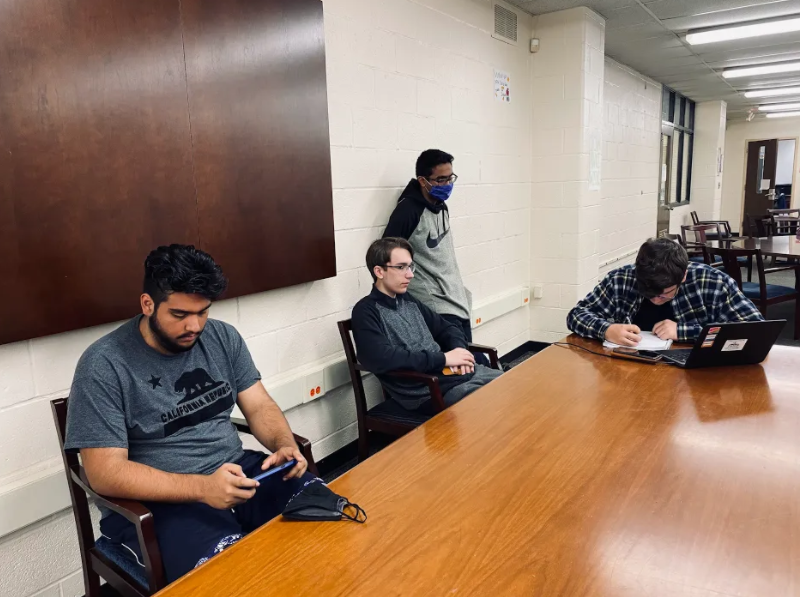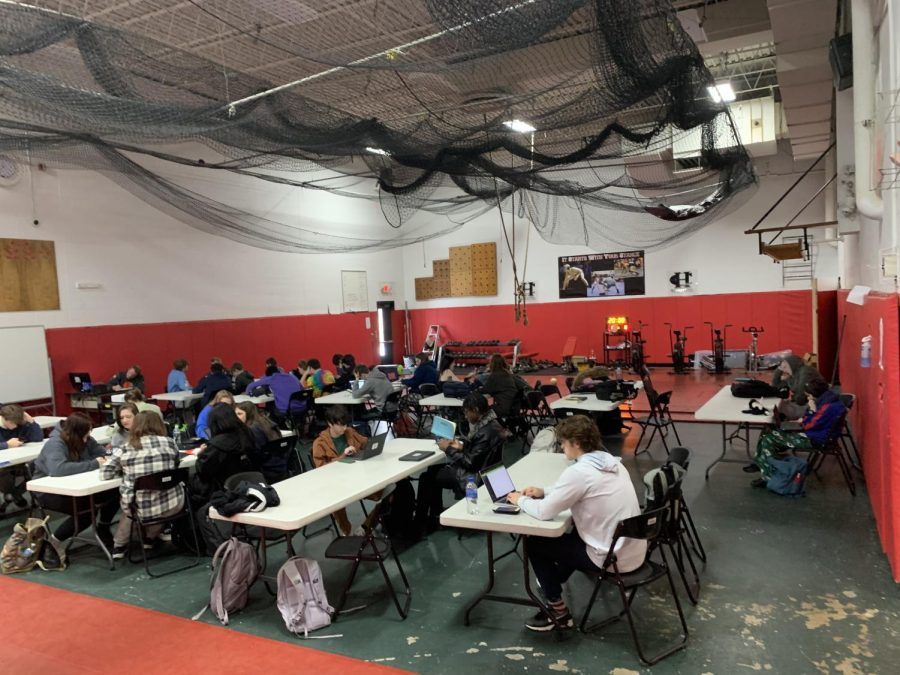The School to Job Pipeline is Broken
November 16, 2021
The young calves willingly follow the only authority they know. Trusting the forces that seem to control them, they unknowingly commit to obey the directions of another. It is no wonder that people blindly follow the directives of others, unknowing of another path. We hear, “but we’ve been doing it like this for so long.” Which by no means, implies that it’s the right path. It is no secret that students hold contempt for the teachers and classrooms that hold them, hostage, for days on end. Due to this apparent cliche, nobody seems to question the root of this hatred. Children are to be seen, not heard. Listen and obey and you’ll be okay, compliance escapes punishment. Listen to the older generations because age gives you the authority to be “correct.” Respect your elders for all their wisdom even if the lies they tell set your heart afire. Does time truly give adults the right to control the fragile innocence of children? America’s economy was mechanized to be lucrative and efficient, our economy needed workers and to ensure they would get compliant employees for many generations to come, schools were organized to do just that. The Industrial Revolution had a significant impact on the modeling for schools, which is still felt today. With so much reformation in our government and society since the start of compulsory learning, why has our school system remained the same? With new discoveries in psychology and the growing awareness of mental health, schools need to take this into consideration when deciding how they teach future generations of students.
Children have potential that is not utilized in classrooms. Most children agree that they like learning and the opportunity to be creative, and yet a majority of students are struggling with depression or anxiety. According to a 2017 survey compiled by the Pew Research center, 13% of teens (12 to 17) reported experiencing a major depressive episode. That amounts to 3.2 million teenagers struggling with depression, note that this accounts for only the people that admitted to having these feelings. With school being the most significant part of a child’s life, it can only be assumed that it contributes to these startling statistics on teen depression.
We, as students, need a learning environment that promotes good mental health and recognizes the neurodiversity of all children. With the right amount of effort in the right hands, we can surely organize a school system that attends to the needs of all students and acknowledges the varying needs of different mental health challenges. Making these small but necessary changes could change the education system in the US for the better, creating new generations of confident, bright, well-nourished civilization.
In 1876, the Industrial Revolution was booming in the American economy. In light of this newfound, fast-paced economy, a bounty of workers was needed. With industry owners taking advantage of naive new workers, they were worked to the bone with hazardous working conditions, working 12-16 hour shifts to be underpaid in crowded workspaces. Much of the factory equipment was very unsafe and continuously caused injuries to workers. There were chemicals and heavy metals in the air that were either unknown to be harmful or more likely, ignored. With frequent episodes of inflation within the American economy, people could no longer afford to live off of their own products and were forced to outsource to fit the changing economic expectations. With small businesses being overrun by the fast-paced production of factories, people now needed to work in factories to make money. Heat exhaustion, small spaces, long hours, low pay, and deadly chemicals wafting in the air, these factory workers were living a nightmare. In desperate need of income, many families sent their children to work in factories to bring in extra income. Children were subjected to these dangerous working conditions while being paid even less than adults at just 8 years old. Due to their smaller undeveloped bodies, they were placed in jobs that required them to crawl into small spaces and clean up in hard-to-reach places. Without regulations or worker’s unions, these horrible working conditions continued for too long.
Also in the mid-1800s, the United States began to express the importance of schooling for children. Massachusetts was the first state to require free compulsory learning for children in 1852, all US states followed suit, schooling was required by 1918. In 1938, The Fair Labor Standards Act set a minimum wage and labor hours limit. It also implemented child labor laws, prohibiting children under 16 from working in manufacturing and mining. At the time, American society set up life as a series of systems that everybody followed.
Children wake up early and are told to be obedient and hardworking for 7 hours a day and then do it all again the next day. Following a set routine every day. Controlled by the timed dings of a bell. Raise your hand to speak, ask for permission to use the restroom, be obedient or there will be refractions. Is this routine-based learning sufficient for an adequate learning experience for all students? Trying to fit a square peg into a round hole and you’re going to end up with a very confused adolescent. It is vital that schools cater to the needs of the students. School is meant to help children learn and excel, which is all for not if the child is being ignored for the sake of the system. To this day, schools have followed the same factory-oriented scheduling in American schools. The system is outdated and frankly has done more harm than good to the upcoming generations.


























